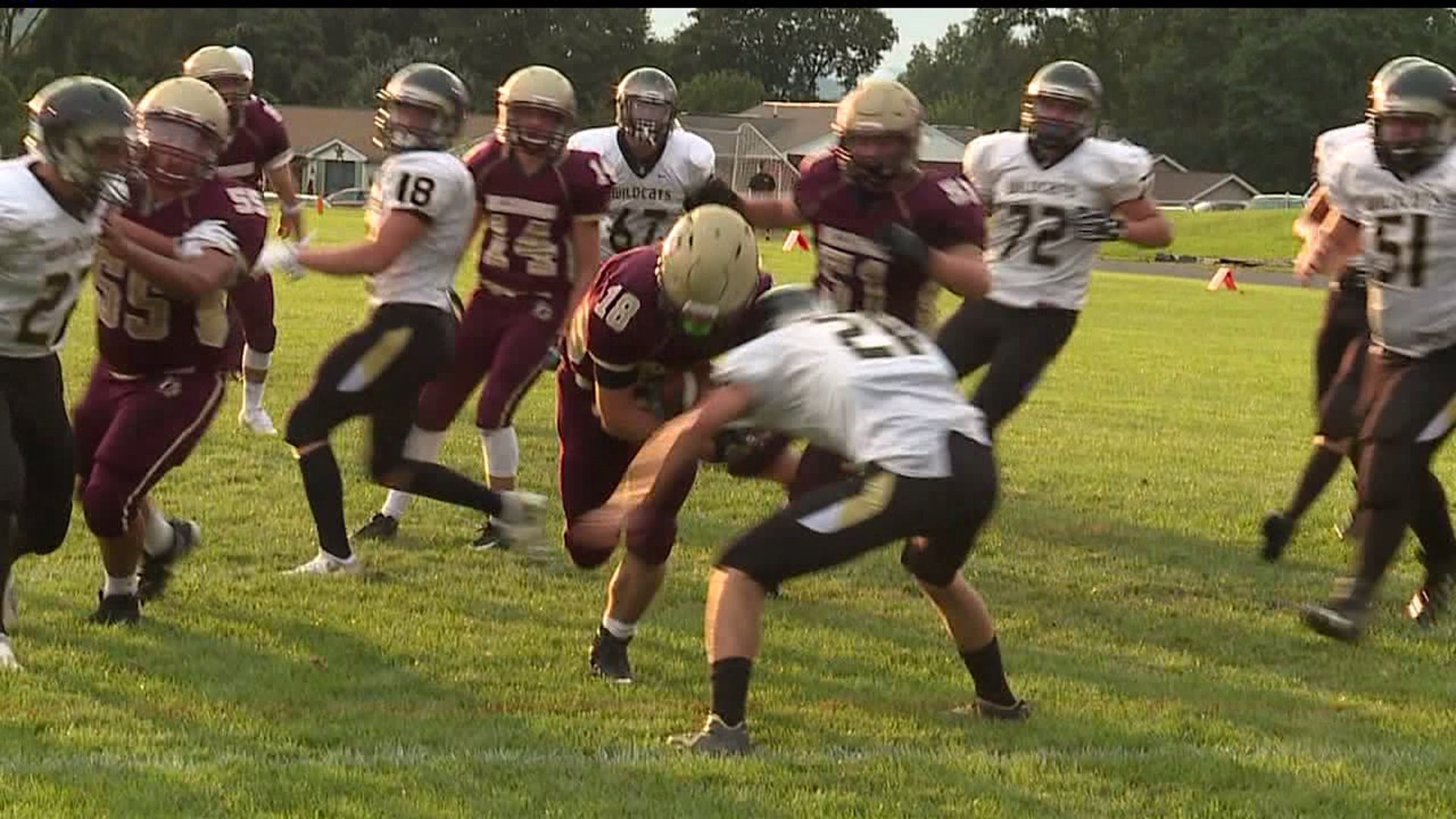FOX43 - Two serious high school football injuries on the same night are raising questions about the safety of football. Some are wondering if changes need to take place and if the sport will survive as participation continues to shrink.
For the first time in 30 years, the number of participants nationwide in high school sports is down from the previous year. The sport of football in Pennsylvania has not been immune to the decline.
"The idea is to try and make practice harder than the games and it is difficult to do that when you are only suiting up a couple dozen kids," said Todd Mealy, head coach at Lancaster Catholic.
A tall task for some schools as high school football participation is in a decade long decline. Nationwide, according to National Federation of State High School Associations, over the last ten years participation in high school football has dropped by nearly 100,000 in Pennsylvania over the same time frame their has been a drop over 12,000 players which is over four and half percent of total football.
For Mealy, who has 22 years on the sidelines, there are multiple reasons.
"One is there are kids that just are not interested in playing football, he said. "A lot of things exist for them to occupy their time so we are competing against a number of other sports and special interest but the other, are the health risks that come with playing football."
There have been more than 10 schools that have had to forfeit games this year in Pennsylvania. Millersburg being one of them. After starting the year with over 20 kids on the roster, the Indians were down to just 14 in Week 7. Head coach Aaron Wright knows the root cause of his low numbers.
"I can`t speak for the whole state of Pennsylvania but I can speak for us," Wright said. "Our enrollment is down. We are down a couple hundred kids and when you try to pull players and kids for sports you are going to have less kids come out."
Wright hits on another trend in Pennsylvania: declining school enrollment.
According to the PA Department of Education, total grade school student population in Pennsylvania has dropped over three and half percent since the 2008-09 school year; that's just under 65,000 kids. In a class-A school like Millersburg, that low turnout is a problem across all sports.
"We have coaches that do other coaching in other sports and stuff like that try to recruit and say hey why don`t you come out for football so we try as much as we can," said Wright.
Wright acknowledges that some may not want to play the game for safety reasons, but he has not experienced a kid telling him that is a reason for not suiting up.
Mealy also acknowledges that injuries are factor and has a message to those who may doubt the game.
"I`d like to tell folks today that football is the safest it has ever been," he said. "But everyone has to assume their are inherent risks that come with playing football. Just like when their are risk when you board an airplane or drive a car."
Not one to believe that football is the last bastion to create toughness in American boys, Mealy, in fact, he wants to see a course correction.
"I am probably the biggest skeptic," he said. "In terms of this, the direction that football needs to head, meaning, I think football needs to change."
The game has evolved in the past and Mealy looks at that as a key to the future. Some of the changes he sees are limiting overall hitting, certified trainers at all high impact sports and delaying kids exposure to contact. He believes would create a safer game, one that features even more athletes.
"If we can get the stake holders of American football on board we can create a safer game. Where those concerns are really mitigated . I mean parents have those concerns when their kids are playing soccer playing ice hockey. Parents are concerned about their kids as they rightfully should be."
Twenty-six states, plus the District of Columbia, offer some form of alternative to 11-man football, such as six on six or eight on eight to deal with small numbers. Pennsylvania is currently considering adding a similar alternative.

